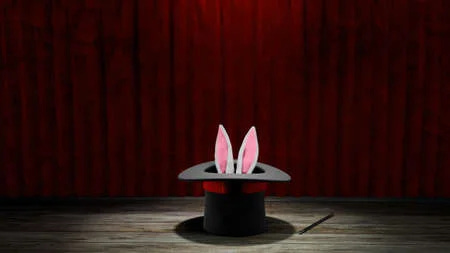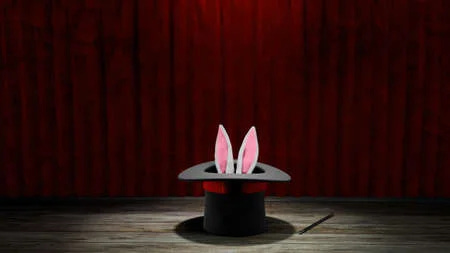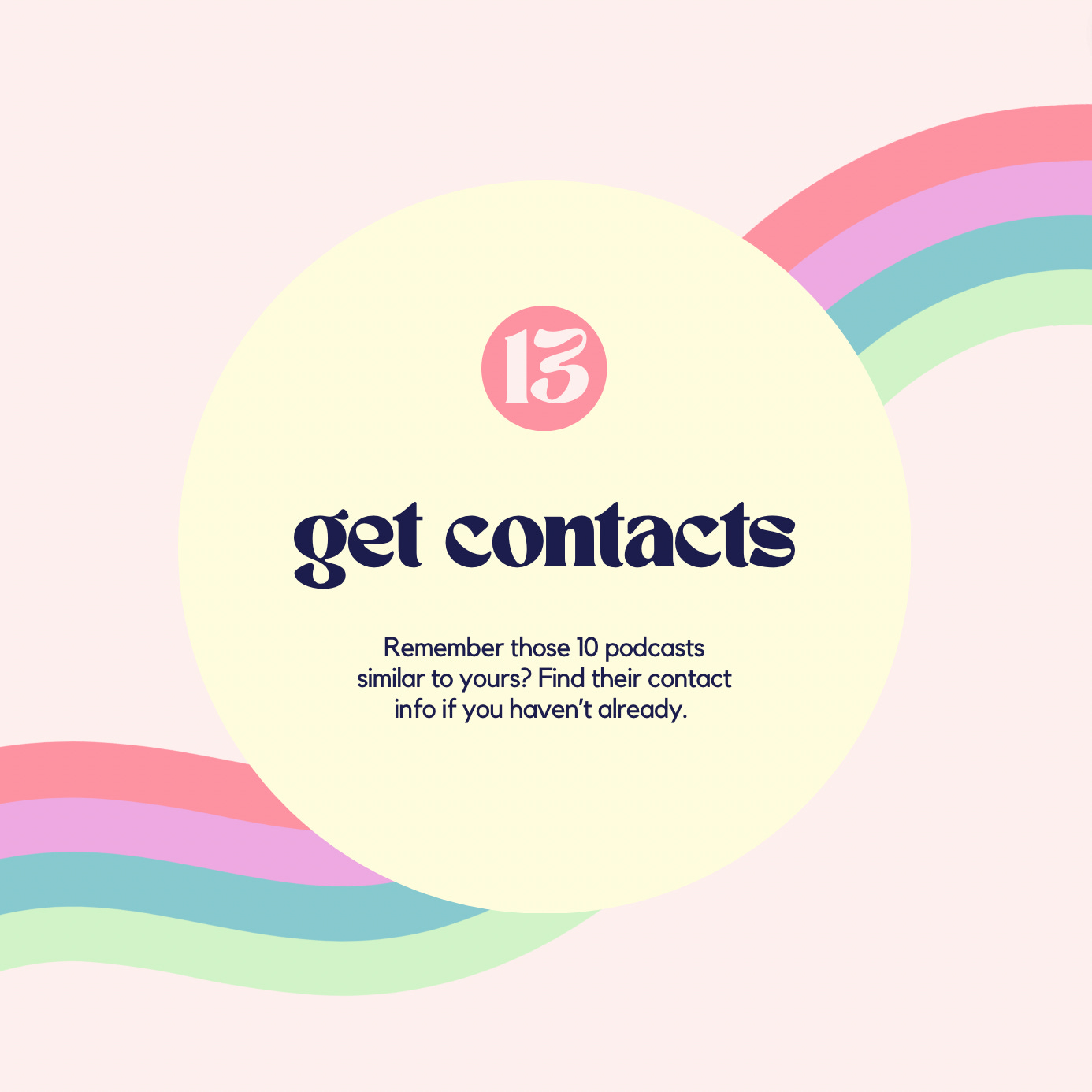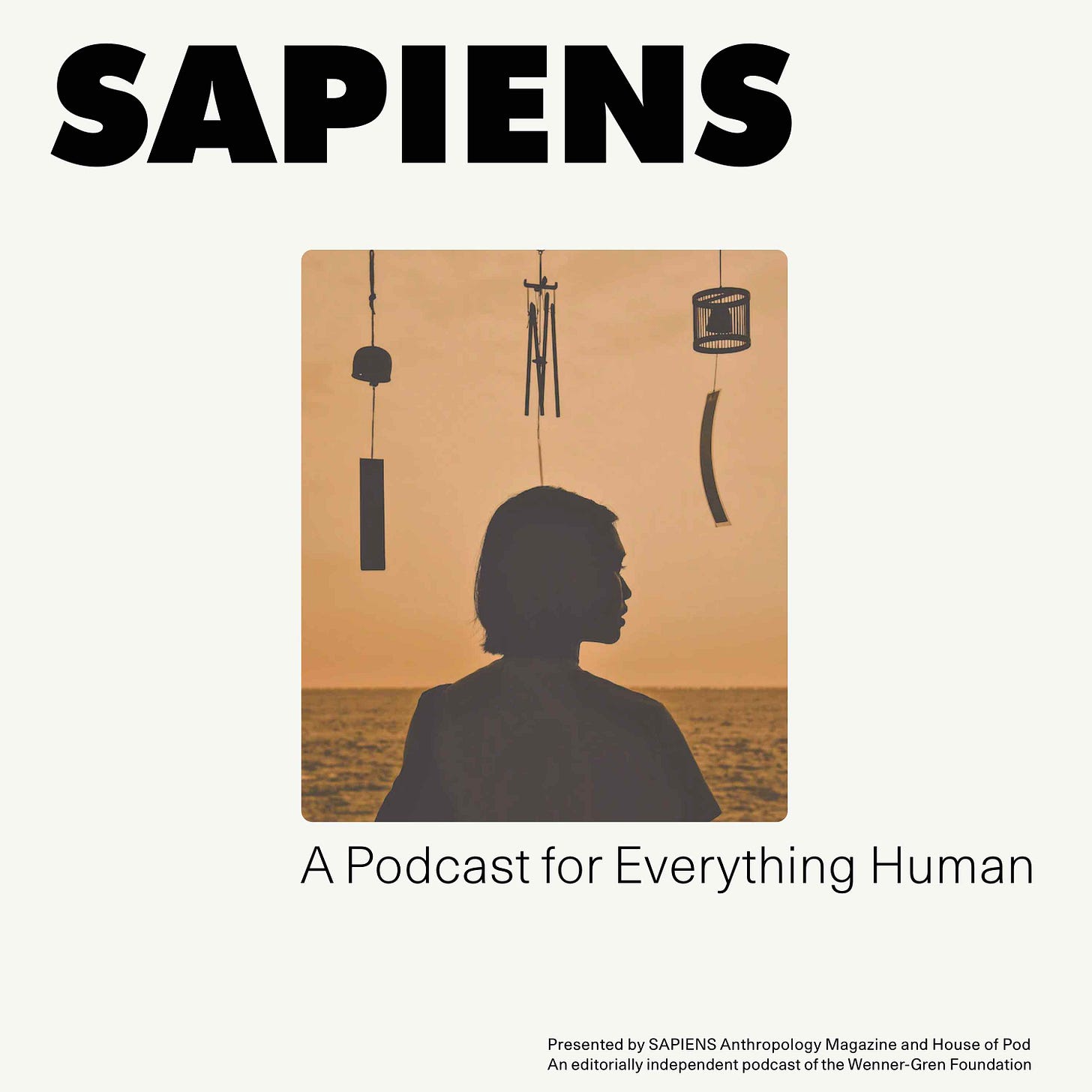Welcome to part 3 of our how to launch a show from nothing series. In part 1, we covered getting your basics such as knowing your why and knowing your audience. Part 2 focused on concepting and charting out an exact course for your podcast. In this part, we cover recording plus post-production and editing.
If you only have time for ONE thing
Bookmark this post for a later time and carry these words with you –
Ready a script before your recording, no matter what the format of your podcast is. Even if you see your show as having more of a conversational style, having a script or outline will help you cover your key points.
Before we get into it, here’s (potentially)just the thing you’ve been waiting for!
52 Weeks of Podcast Growth
This week’s tip is: Remember those 10 podcasts similar to yours? Find their contacts if you haven’t already.
Phew, okay we’ve done our research and we’ve done our practice rounds. So, let’s find those contacts and gear up to send those pitches. To sum it up, the most recent five podcast growth tips are:
Show your 300-word pitch to a friend. Ask them if they understand what your show is about.
Rework your pitch if needed. If not, share it with a community that is not your friends.
Record a trailer of your show.
Get a friend or a fellow podcaster to hear your promo swap.
Find the contacts of 10 podcasts similar to yours.
👋 New here? Start from Week #1 of Podcast Growth.
Ready. Set. Record. (And then some)
Quick reminder: choose the right equipment before you begin recording.
🔴 Prep for Recording
You made it! The loins are girded and the concepts are clear. You’re finally ready to hit record. But before you do, let's prep for perfection.
🎯 Choose the right location
Pick a quiet and controlled environment for your recording.
A big room with bare walls might not be your best friend. It’ll likely result in a rather echo-y sound.
A small room with soft surfaces is where you want to be. It’ll likely result in a crisp sound: the sound waves from your voice won’t bounce all over the room as much and you’ll be surprised how even your mic sounds way better.
🎯 Use quality recording equipment
Pairing the best mic you have available, with the right recording environment can make all the difference. Refer to the tools we’ve covered in Part 1 of this series.
🎯 Reduce noise in your surroundings
Your editor, or you as your editor, will thank you for it.
If you can, we recommend switching off any AC units, fridges, and fans in your surroundings.
Surround yourself and your recording equipment with cushions and blankets. Not only does it make for a cozy environment, it also keeps your voice from bouncing all over.
🎯 Ready a script
Even if you see your show as more of a conversational style, having some kind of script or outline will help you cover everything you need to and remember key points. Keep your sentences concise. Concise writing makes it easier for people to follow along. The same writing you might do for an article or blog post, might need tweaking to work for audio.
Pro-tip: don’t shy away from using ChatGPT for this. If you have an article you want to convert into a script, you can share it with ChatGPT and ask it to write a script for you.
🎯 Do a dress rehearsal
Test your position and mic set up along with your script. This helps you get familiar with your mic.
Pro-tip: open up both your audio and video recorder so you can pretend you’re your own producer. Seeing yourself record can make you feel more comfortable in your skin.
🎯 Get yourself and your guests ready
Do your vocal warm-ups.
Keep your hydration tools close.
Provide your guests with as much info ahead of time so they know what to expect and how to prepare themselves.
Give them time to feel settled in the recording environment, have a little back and forth with each other, break the ice before you hit record.
🔴 Get recording!
Without further ado, let’s get to it. Here are important things to keep in mind when recording:
🎙️ Don’t forget to click record
It’s been known to happen, trust us.
🎙️Record both audio and video
That is, if your recording software allows and your guest is comfortable with that (you’ve told them ahead of time),
If you’re using a platform like SquadCast or Riverside, it will manage this for you and include a local recording.
If you’re using something like Zoom, it’s recommended that you and your guest record locally if you can, instead of using the Zoom recording. But, do still record that for a back-up just in case!
🎙️Take a pause, whenever needed
If you want to re-take something you’ve said, go back to the beginning of the sentence. It’ll be way easier to clean up in editing and sound more natural.
Encourage and allow your guests to do the same.
🔴 Post-production and editing
Just like most of writing is rewriting, editing plays a huge role in audio, to put it lightly. So, here’s a bullet-pointed list of intro to post-production and editing. Bookmark, write it out, stick it on your table.
✅ Import the raw audio files into your editing software.
✅ Listen to the raw audio and select the best takes.
Keep in mind that you’re always looking for the best takes of scripted elements like the intro, outro, or when making a promo or a trailer.
✅ Trim and cut the audio to remove any mistakes, dead air, or irrelevant content.
This is both a technical and editorial task. You want to clean up unwanted sounds or breaks. But, you also want to keep the audio that serves the episode and makes it sound human.
If something is too far off track or doesn’t contribute to the overall purpose of the episode, use your editorial decision making to keep what’s best to result in the strongest possible episode.
✅ Add any music or sound effects to enhance the listening experience.
If you’re looking for intro music, Ausha has some options.
Remember to be mindful of whether the type of music you use is competing with or complimenting the speaker’s voice when used together.
✅ Balance the volume levels of different tracks to ensure a consistent volume throughout the episode.
Trust your gut as a listener and adjust as needed.
✅ Apply EQ and other audio processing to improve the clarity and quality of the audio.
Here’s a starter EQ technique guide from Glow.fm.
✅ Adjust the timing of the audio to make sure that it flows smoothly
Remember that all of these adjustments are all in service of creating the best final product you can. Audio quality is really important for listener retention!
✅ Add any sponsor or promotional messages.
✅ Export the final audio file in a format suitable for distribution, such as MP3 or WAV.
▶️ You’re ready to upload! If you’re wondering which podcast hosting platform to choose, check out this free pros vs cons guide.
🔴 In the next (and final) part, we will talk launch marketing for podcasts.
Special: International Women’s History Month
In honor of Women’s History Month, the team at Tink Media wanted to celebrate some of our favorite women-hosted podcasts and the podcasts that those women love! The result is a wonderful web of women-hosted of podcast recommendations!
From the desk of Tink
Being human is complicated. We require food and shelter. We have histories to contend with. We create rituals to control fate. We steal. We fight. We kill. We love. We shape the environment to suit our needs—sometimes with terrifying results.
This season of SAPIENS embraces the diversity of human experience, digging deep into our human past and how we live today. The throughline of this season is the way in which humans use cultural beliefs and practices not only to explain the past, but also to imagine the present and future. These stories aspire to understand how cultures can guide knowledge of human truths and help all of us to become seekers of wisdom. Get ready for a range of human stories: from the origins of the chili pepper to how prosecutors decide someone is a criminal to stolen skulls from Iceland.
More Magic
Devin tried to sleep with a podcast.
Shreya made a niche podcast playlist for when you want to be anywhere but here.
Lauren is hosting a Radio Boot Camp on Podcast Marketing 101.
Arielle and Tom Webster tackle 5 Questions To Ask Your Podcast Audience on Sounds Profitable and Tink gets a shoutout.
Glassbox launched Business of Sound, a podcast that talks to industry experts, content creators, and media buyers about how to earn more money from podcasting. Ad sales, monetization strategies, audience growth, new distribution channels, and cutting-edge production techniques, oh my.









